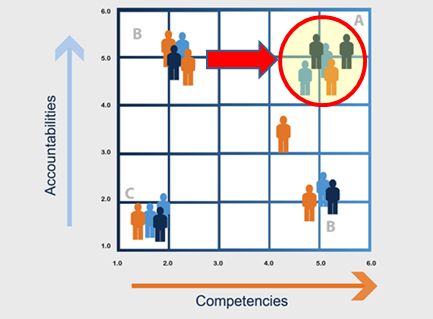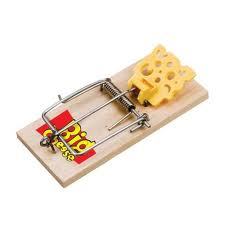 When you think of sales, do you think of pejoratives such as pushy, sleazy and dishonest? Most people do.
When you think of sales, do you think of pejoratives such as pushy, sleazy and dishonest? Most people do.
Yet in “To Sell Is Human: The Surprising Truth About Moving Others,†Daniel H. Pink contends that most of us, regardless of job title or salary structure, are salespeople.
What?
Sales, broadly defined, means moving people to action, which people must do well to be successful.
This “non-sales selling†doesn’t involve a purchase—it simply means persuading, influencing and convincing others. Not only does this comprise 41 percent of total work time, according to an international study with 9,057 respondents that Pink paid for, but people say it’s the most productive use of their time.
While only one in nine Americans works in sales per se, the other eight are selling others on learning chemistry, on using new media for marketing, or on exercising more.
What Pink calls “EdMedâ€â€”healthcare and education—has a large sales component. This is the biggest job sector in the U.S., with more workers than manufacturing, retail and professional and business services, and projected to grow the most.
Pink, following up bestsellers “A Whole New Mind†and “Drive,†wants to clean up its bad reputation and recast sales not as a way to get the best of others, but to improve the world. As he explains the book’s title, “Moving others doesn’t require that we neglect these nobler aspects [idealism and artistry] of our nature . . . Today it demands that we embrace them.â€
Pink’s ABCs Of Sales
Some of Pink’s advice is supported by conventional wisdom but not all; Pink draws heavily upon sometimes surprising social science research.
“Attunement†is the first thing we should learn. If we don’t understand others, how can we hope to persuade them?
It’s about getting into their heads with perspective as well as hearts through empathy. Powerful people are prone to losing touch with others’ perspectives. So paradoxically, reducing one’s power or becoming humble is a must.
Mimicry helps. If you subtly mirror another’s gestures, you will seem more in tune, but if the other person senses your mirroring is staged, he or she will be turned off.
Surprisingly, extroverts don’t make the best salespeople, but neither do introverts.What works best is being an “ambivert,†which is most of us in the middle of the bell curve. Extreme extroverts are often awful listeners and can be pushy, while an extreme introvert can lack initiative and the ability to close a deal. Ambiverts who can tack back and forth between extroversion and introversion do better at attunement.
If you think your failures are “permanent, pervasive and personal,†you lack “buoyancy.†Those who bounce back, says Pink, attribute rejection to circumstances: it’s a slow economy, he’s having a bad day.
Positive emotions are contagious, so when negotiating, taking a friendly tone and smiling works better than being adversarial, despite what’s portrayed in movies. Your positive emotions (gratitude, interest, contentment) should outnumber negative (anger, shame, sadness) by at least 3-1 but not going over 11-1. Too much risks detachment from reality—not taking responsibility for what one can control and learning from failures is important.
It’s less important to motivate yourself with clichés like “I’m the best†than to simply ask, “Can I do it?†A question opens you up to problem solving and boosts confidence.
The final attribute, “clarity,†means the “capacity to help others see their situations in fresh and more revealing ways and to identify problems they didn’t realize they had.â€
Today people often have all the facts at hand—they just need help applying information. For example, maybe you thinks you need a better presence on Facebook when you’ll find more leads elsewhere, or maybe a bad website is actually holding you back more than your social media strategy—redefining the problem to better meet goals is what standout salespeople excel at.
In this paradigm brainstorming trumps quick fixes and the successful sellers are the ones who take the time to develop relationships and understand their clients.
Putting It All Together
“Pitching,†“improvising†and “serving†are three tactics Pink highlights for putting your skills to work.
He identifies six “successors to the elevator pitch†including:
- the one-word pitch: President Obama’s re-election pitch, “forwardâ€
- Reagan’s question pitch: “Are you better off today than you were four years ago?â€
- the memorable rhyming pitch: “If the glove don’t fit, you must acquitâ€
- the email subject line pitch: pithy and specific, “10 Selling Tipsâ€
- the Twitter pitch: don’ts include complaints and “here’s what I had for dinner†(does anyone like hearing that?)
- the Pixar pitch, a six-sentence structure, part of which often introduces a movie’s trailer: “Once upon a time _____. Every day, _____. One day ___. Because of that, ___. Until finally ___.â€
Every sales pitch, Pink shows, can be put into each of these formats.
Pink then visits an improvisational acting coach to understand how improv can expand the repertoire of business people. In her hilarious memoir “Bossypants,†Tina Fey also elaborates on how improv comedy works. Here’s the basics, per Pink:
- Say “yes and,†not “yes butâ€
- Make your partner look good
- Hear offers
The final suggestion, in what I consider the takeaway of this book, is to be a server, not a taker. Don’t “upsell,†which is a “detestable†word; “upserve,†he exhorts. Treat everyone as you’d treat your grandmother. Rethink the idea of sales commissions.
Â
Â
By Linda Rastelli
DealerNet Services
Â
Â
Â
Listen To Your Mother: Advice For Making The Sale On Your Website (Part 2)
Tags: A wise person would have taken my mother’s advice the first time.
A wise person would have taken my mother’s advice the first time.
Alas, when it comes to shopping online there are hurdles and derailments in every corner, waiting to sabotage your efforts. And my mother finds them all.
Why does that matter?
Because my mother is retired and she has a laptop that goes everywhere with her, from home to vacation home. She’s not very tech-savvy but she’s quick with a mouse and has a disposable income. In other words, she’s your customer.
Or she could be, if you didn’t screw the whole thing up so badly!
It’s been three years since my mother and I began our phone ritual of her complaining about a website and me writing it down.
She’s had a lot to say about customer service along the way and plenty on the subject of websites that don’t work.
She may be just one person but where there’s one there are more. They visit your website and silently leave, never to be seen or heard from again. They may not vocalize their frustrations but they’re certainly acting on them – or failing to act, by refusing to buy from you.
If you’re not convinced, just listen to my mother…
Mother Says: What The Heck Is It?
“People should try to shop on their own sites,†she says. “Do you think they’d buy something if they had no idea what it was?â€
She’s talking about the shower curtain.
She wants a new one for the guest bathroom in her vacation home. Her vacation home is strictly beach-themed. And the shower curtain she wants has a pattern of small… somethings… that may or may not fit with the theme.
“Is it a duck? Maybe it’s a seahorse. I have no idea.â€
Maybe you’ve been there. Maybe you’ve tried to shop for anything from home décor to clothing and been unable to discern polka dots from plaid, or in this case, ducks from seahorses.
“Sites need a zoom feature. You can’t just look at something that small and say, ‘Oh, ok, I guess it’s fine…’ You have to know what you’re buying. Do you know what I did? I got a magnifying glass.â€
She says this with a mix of disgust and triumph – how dare “they†make her resort to such stupid tactics, but kudos to her for thinking of it.
“You know what it was? A seagull! A big, fat, ugly seagull!â€
If there’s one thing my mother hates it’s birds of any sort. If there’s another thing that pulls in at a close second it’s being forced to interpret some aspect of a product that should have been clearly identified by the “click to zoom†function or mentioned somewhere in the product description.
And my mother may hate birds but she is really pissed by the effort involved in discovering the birds. The birds have come to represent the entire site. And she’s totally gone.
“And do you know what else?â€
The thing about crummy websites is that there is usually a “what elseâ€.
“Half the time the alternate colors don’t work. So when you see a color called ‘majestic’ how the heck are you supposed to know what that looks like? What the heck color is ‘majestic’?â€
I have to admit, I have no idea.
If You Want Her To Buy, You’d Better Show Her What It Is
I don’t think this is an issue that needs belaboring. If you haven’t figured out by now that your product photos matter then you can go back and read her previous complaints to the same effect.
Or you can try shopping your own site and looking objectively at your seahorse/duck/bird patterns to be sure another human being – perhaps one with imperfect eyesight – can tell what they are.
And for the sake of overburdened brains everywhere, avoid cute marketing-y sounding descriptions in favor of real ones. If you need help crafting product descriptions, go read this post.
No matter how you slice it, “majestic†is not a color.
Lesson Learned: Details Matter
It could be the indecipherable photos or indescribable colors. Or maybe even the lack of photos and color details. If you’re not paying attention to how your products appear to your customers you just may not have any customers to worry about.
It’s definitely tough to be objective about your own inventory so do yourself and your sales a favor and find an outsider to give you honest feedback.
It could be as simple as recruiting your mother.
Â
Â
A colleague, cousin or Twitter acquaintance will do just as nicely – as long as they are dead honest and maybe even a little nitpicky. Because trust me, your customers will be.
by Carol Lynn Rivera
DealerNet Services
Â
Â
Â
Headlines That I Hate: 5 Ways To Ensure I’ll Never Read Your Blog Post
Tags: You should know up front that this is not about writing a bad headline and how to fix it. There is plenty of great advice out there to help you make sure your content gets read and doesn’t end up on the Island of Misfit Posts.
You should know up front that this is not about writing a bad headline and how to fix it. There is plenty of great advice out there to help you make sure your content gets read and doesn’t end up on the Island of Misfit Posts.
This is about writing a bad headline… for me.
Why should you care?
Because I’m not alone. Lots of people I know share these same pet peeves and they aren’t reading your blog posts, either.
And the thing is, we could be missing out on some great content. You may have poured your heart and soul into it but you’re wrapping it with spit and duct tape and that just isn’t appealing.
So here are some silly, trite, tired approaches to headlines that you may want to consider wiping from your repertoire. It just might mean the difference between an eye-rolling click of the delete button and an extra reader who happily clicks the tweet button.
1. “X Is The New Yâ€
You see these in confounding numbers.
Customer Experience is the New Marketing (It’s not. Read this post from Jeannie Walters at 360 Connext for a great opinion on the matter.)
Social is the New Search
Also not. Social is social and search is search even if they are now intrinsically bound.
How about just telling me what something is instead of what it’s (allegedly) replacing? There is room for more than one thing in the world and in spite of how clever it sounds to be discovering some new paradigm, most things can still be traced back to the same fundamental principles of marketing.
The reason I don’t like this is because it implies that we should be rethinking our methods or tactics or perhaps even our entire marketing plans in light of “the next greatest thingâ€. It creates a false sense of urgency about something we should be doing. It has “I am a trend†written all over it and that can easily morph into “I am the next shiny thing. Look fast or get left behind!â€
How about this instead… slow down. Stop riding trends and figure out how to adapt your tactics and turn change into opportunity. Tell me about your success with that and I’ll be sure to read.
2. “Z Is Deadâ€
More things have died this year than I can count… search, email, television as we know it.
A close cousin of this headline is in question format: Is Z Dead?
The answer to that is pretty much across the board… nope.
Facebook is not dead or dying. Heck, even MySpace managed not to die, in spite of our best efforts at slaughtering it via headline.
RSS is doing just fine without Google Reader (if you want to say that Google Reader is dead, go ahead. I’ll give you that much. But it still doesn’t make for an interesting headline.)
Nothing from Twitter to PCs are dead or dying.
I don’t like these headlines because they purport to be prophetic and end up being some lame regurgitation of a questionable statistic reported in someone’s ten-person “studyâ€.
Here’s when something is dead: when it’s dead… for you. If email marketing is a waste of your time and you have experimented and tested and gotten zero results then call it and move on. Otherwise, forget what some guru somewhere has decided works and doesn’t work.
Even if you’re the last one standing on earth using a particular tactic – and it’s working for you – who cares if it’s dead or even undead?
3. “I’m In Loveâ€
With a man? A cool app? Your new shoes?
Vague headlines that say absolutely nothing about the content of your post are a guaranteed way to ensure that neither I – nor most busy people – will click to read more.
I’ll admit it… sometimes I read posts even if they have the crummy headlines I just mentioned above. Usually because I’m looking for a fight, but still… ya got me.
But this one? Never.
These kinds of headlines say one of two things: I’m too lazy to come up with something better or I’m too self-absorbed to imagine why people wouldn’t be absolutely fascinated by my every word.
Does that sound harsh? Hey, it could be great content! But I’ll never know. If you’re really in love then woo me… just a little.
4. “Todayâ€
Along with the vague headline, the one-word headline has lazy/narcissistic written all over it.
It’s almost an afterthought… oh yeah, I need a stupid headline. Here, take that!
You’d better have some impressive word up your sleeve if you want to make this even the tiniest but incentivizing. Even if your post is, in fact, about “today†give me a reason to care.
5. “The Secret To Doing ABCâ€
When you write a blog post, do you hide it behind paywalls and passwords? Do you forbid search engines from listing it and do everything in your power to prevent others from finding out about it?
No?
Then it’s not a secret.
I know this is a gimmick. A lot of people know this is a gimmick. It sounds very important but usually it ends up being the same advice I’ve read on a hundred blogs in a hundred different ways.
Beyond gimmickry, I dislike these headlines because they imply there is just one right way. The right way. And we all know there is no such thing.
So be honest: when was the last time you read (or wrote) about a “secret†that was truly new and heretofore undiscovered?
Then be honest in your headlines. Just tell me you’ve got a great idea for promoting my website. Not “the†secret.
Bonus: D Is A Scam
I called this a bonus because it’s a little different than the rest.
If you tell me something is a scam, you can bet your booties I’ll be clicking and reading!
But here’s what you’d better not do once I get there: bait and switch.
You know what I mean. There’s a headline that shouts, “Twitter advertising is a scam!â€
I want to know why! What does that mean? Is there something I should be worried about?
Then you get to the post and what’s the first line? “A lot of people say Twitter advertising is a scam but I don’t agree. Here are six reasons why it’s great.â€
Then how about this for a headline: 6 Reasons Twitter Advertising Is Great
Not only will I click on that but I’ll click on your next headline… and your next one… because I will trust that you’re going to share the information I want to know.
Â
Â
What do you think? Do any of these headline tropes turn you off, or are you still bedazzled by secrets and lured by the vague promises of single words?
Â
Â
Â
Â
Why Entrepreneurs Are Animals—And How That Can Help You Get Ahead
Tags:
Ever regretted a business decision you made in the heat of the moment?
Most of us have. And most of us have felt the urge to yelp with excitement when we win a big success, too.
That’s your inner animal at work. Literally at work; you don’t leave it behind when you’re taking care of business!
You might like to think you’re a cool, clear-headed entrepreneur making rational decisions, but what’s really going on underneath is a bit… messier. Whether you know it or not, you’re acting and reacting just like an animal.
Here’s why:
Why Entrepreneurs Are Animals
Your business decisions are strongly influenced by your hormonal state. Yep, even if you’re a man. In fact, the effect is typically stronger in men, because a lot of it is testosterone-based.
John Coates, a Wall Street trader turned neuroscientist, found that fluctuating testosterone and cortisol levels have a massive influence on the decisions we make. He’s seen the effects first-hand on the trading floor, and his research shows that we’re no different than other animals in our hormonal behavior.
Testosterone is released into your bloodstream during a victory, a risk or a competition. It’s like a chemical battle cry that echoes through your blood, your brain and your body.
In times of stress and uncertainty, your body produces cortisol, which has the opposite effect. It’s calming in small amounts, but too much leaves you feeling exhausted, anxious and depressed.
What does this all mean for your professional life? Well, if everyone’s decisions are influenced by their hormonal state, you can use that knowledge to further your ambitions.
Understand Your Inner Animal to Get Ahead
Coates calls it the “winner effectâ€: the excitement of competition and success prompts your body to produce testosterone. That influences your brain to make riskier decisions, and for a while you keep winning bigger and bigger, smashing through targets like a charging rhino.
In the end, of course, overconfidence turns one of those optimistic gambles into a failure. You kick yourself (how did you fail to see it coming?) as cortisol floods into your bloodstream, making you anxious and miserable.
You try to protect yourself by avoiding further risk, which means you miss out on worthwhile opportunities until your hormones level out and you regain your confidence. If this had a name, I guess it would be the “loser effect.†But don’t worry; you can turn it around!
Once you know how your hormones affect your judgement, you can consciously correct for these effects and keep your business decisions on a more even keel:
- When you’re feeling cortisol-stuffed and risk-averse, remind yourself to look rationally at any trade-offs you’re considering. If the benefit is high and the risk is small, maybe you should give it a chance!
- Remember that asking for help when you need it is a sign of professional strength, not weakness. Don’t let a cortisol downer isolate you from your support network.
- Understand that a little bit of testosterone and risk does you good, making you more productive and successful at work—as long as you’re not overdoing it.
- When you’re feeling on top of the world with a testosterone high, remember that it’s a long way down! Rein in your risk-taking urges a little and consult with colleagues or friends to find out if they think your plans are genius or just plain nuts.
- Notice when your hormones are being manipulated to influence your decisions. Brands likeThe Sales Lion and Shark Tank, for example, aren’t named after large predatory animals by sheer chance; they’re designed to appeal to the testosterone in an ambitious entrepreneur like you!
Learn to Tame the Animal in Others
You aren’t the only one who gets hormonal, you know. It’s every single one of us.
We get angry, tearful, euphoric or nervous because our hormones overrule rational thought. Every business meeting or transaction is influenced by these biological factors, so let’s learn to work with that.
If you know a contact or colleague has just suffered a setback in their business or personal life, remember that cortisol will make them less interested in opportunities that carry any kind of risk. You might want to offer brief, friendly condolences and wait a while before bringing them your latest proposal. Or perhaps you can frame your idea as a risk reduction. “Let me take responsibility for X and you’ll never have to worry that it’s been overlooked again†could work pretty well at a time like this.
The flip side of this is to press your advantage when you know someone’s on a testosterone roll. They’ll be feeling exuberant and generous in victory, so make the most of it. In other words, ask for a raise or promotion the day your boss wins an award, and you’re more likely to get your wish!
Whatever your ambition, understanding our animal biochemistry will help you to achieve it. Armed with this knowledge, you can survive even the worst moments of your career with dignity and take full advantage of the best.
You’re an animal. Recognizing that gives you power. Use it wisely, and you’ll be unstoppable!
Sophie Lizard is a freelance blogger and copywriter on a mission to help entrepreneurs boost their income and professional reputation by blogging for hire. Download her free Ultimate List of Better-Paid Blogging Gigs to get started with 45 blogs that pay $50 or more!
Sales & Marketing Effectiveness Blog Prevent ‘A’ Player Turnover
Tags:
This post will explore why all turnover is not created equal. Measuring sales turnover as a percentage can be misleading. A lower percentage isn’t always better.  Yet turnover is probably the most measured sales metric. HR, sales leaders, and Sales o ps all measure it.Â
ps all measure it.Â
Instead of focusing on an overall turnover percentage, focus on retaining ‘A’ players.  Many sales organizations are proud that they have a low turnover metric. But they are retaining the wrong people.Â
Â
Want to retain 100% of your 'A' players? Download the Top 10 Ways to Prevent ‘A’ Player Turnover Checklist. Print it out and put it on your desk.
Â
The first step in preventing 'A' Player turnover is properly identifying 'A' Players. This is not as easy as many think. Here’s an example:
Top Territory Todd:
Todd has exceeded quota the past 5 years. His quota is approximately the same as everyone else. Yet he has 3x the average territory potential in his patch. He has some of the largest current customers. Prospects fall into his lap with little effort. His boss does not want to split his territory. Why mess with a good thing? Todd hasn’t needed to be a student of the game. He has made boatloads of cash and played golf on Friday afternoon for years. Why spend time sharpening the saw? Because of this, Todd isn’t extremely competent on relevant sales skills. Is Todd an 'A' Player? Many would think so based solely on his results. But place him in an equal territory and watch him flounder.Â
Newbie Ned:
Ned has been on your team for 9 months. He impressed everyone during the hiring process. He was diligent during onboarding. His activity is through the roof. He is teaching others of the team new skills he learned in previous roles. Yet, Ned’s results are average for his tenure group. Ned was given the smallest territory and worst customers. Why? His Sales Manager didn’t want to rock the boat. He doesn’t feel Ned knows the product or industry well enough to approach large customers. He is holding Ned back.   Ned walks into the Sales Manager’s office and resigns. The Sales Manager looks at Ned's revenue numbers and doesn’t bat an eye. Once Ned is gone, the Sales Managers labels Ned a ‘bad hire’.Â
What would have happened if Ned was given Todd’s territory? Odds are, his revenue would have skyrocketed. He possesses better hunter competencies and works much harder. In the long run Ned would have significantly out produced Todd. But the Sales Manager was focused on the next 30 days.
The Sales Manager in this scenario missed his number by 4% last year. If he gave Ned a fighting chance he would have hit the number. Backfilling Ned’s territory led to a $1.2 million year-over-year territory revenue deficit. That revenue would have bridged the gap.Â
Â
This is a common issue. So how do you solve it?
- Identify ‘A’ Players - determine your team’s level of competency. Add in performance against accountabilities and plot your team on the 'A' player matrix.
-
Assess whether your performance conditions are conducive to 'A' player success.
- Territory & Quota – do 'A' players have a fair shot to hit their number?
- Leads – are you providing them enough quality leads?
- Is your Go-to-Market Strategy relevant – dated sales channels will frustrate customers. Frustrated customers lead to frustrated A players.
- Reduce non-selling time – admin doesn’t make any sales person money. Minimize it!
- Comp – are 'A' players paid fairly for their efforts?
- Execute the 10 Sales Leadership Ideas in the tool - ‘A’ players won’t settle for an average leader. They need a boss that will remove obstacles, provide candid feedback, and challenge them. ‘A’ players want value from their boss, not noise. Nothing will lead to ‘A’ player turnover faster than poor sales leadership.

http://dealernetservicesonline.biz
Things Are Changing - But Are Things Really Changing With Them?
Tags:"And Round And Round We Go"
Â
 There seems to be a great deal of commonality and consensus in the disconnect between the Sales Department and The BDC Department just to name two and problems within both. It almost seems to be the rule and not the exception that management has not fully embraced the impact of recent changes among them being Digital Marketing is having on the marketplace today.
There seems to be a great deal of commonality and consensus in the disconnect between the Sales Department and The BDC Department just to name two and problems within both. It almost seems to be the rule and not the exception that management has not fully embraced the impact of recent changes among them being Digital Marketing is having on the marketplace today.
The BDC department is too often viewed as a bunch of internet geeks that have no conception of the sales process and should not be talking to customers. The BDC often looks at the Sales Department as a bunch of knuckle dragging egotistical Neanderthals that inhibits them from fulfilling their mandate.
This among other organizational problems plaguing Dealers today is an age old problem but one that has been exacerbated by the rapid and momentous changes that are taking the Automotive Industry by storm.
I know that for Digital Marketing this will change if not for any reason than the younger generation who grew up in this technological world and who have been entering the Automotive Marketplace have already embrace it before they even enter the job market. But what is to be done now?
How long are dealers willing to wait before they take charge and make all the changes necessary to correct the problems that are plaguing them? For instance, when it takes days or a week or longer of calls and conversations just get the manager to give approval to the BDC or the BDC to make the call just to give approval to have their data polled-you know you have a problem.
We all know that this is just one of many issues facing many dealers. So when are they going to realize that they need to have a qualified professional from the outside looking in to pinpoint the problems and provide the solutions necessary to correct them.
Once they make that realization and retain someone and after discussing and agreeing on what is broken and how it may be resolved, you need to hope that something is actually done to implement those solutions unless you are directly involved in the implementation of those changes.
You may have the plan that could put them on the path to sustained and continued growth but if the infrastructure is not in place or put in place to utilize them- all has been for naught.
How have you made an impact on your clients in resolving these types of issues and have seen them come to fruition?
Posted by Bill Cosgrove
DealerNet Services
 Understanding the “why buy†motivations in potential buyers can have a major influence on the methods your dealership may use to entice these buyers to buy from you and not from the dealership down the street.
Understanding the “why buy†motivations in potential buyers can have a major influence on the methods your dealership may use to entice these buyers to buy from you and not from the dealership down the street.
Recently I viewed a number of YouTube videos presented by Simon Senek, a motivational speaker, Columbia professor of communications and author of 'The Golden Circle' and 'Start with Why'.
Â
Senek speaks about how most companies normally approach the act of sales and marketing from an 'outside-in' perspective.
Â
Let’s use a dealership as an example:
•    What they do   = We sell cars
•    How they do   = We employ floor salespeople and list vehicles onlineÂ
•    Why they do    = We do the same as our competitors
Senek maintains that great companies - and he uses Apple as his example - operate in exactly the opposite way. In other words, they work from the 'inside-out' - for them the sequence of events will be:
•    What they do = In everything we do, we challenge the status quo
•    How they do  = We make our products user-friendly, cute to own and attractive
•    Why they do  = Want to buy one?
In Senek’s world, his belief is that companies should think in terms of having a goal of “doing business with people who believe what you believeâ€.
When you apply this to a normal customer/dealership relationship it is a process that may not find universal acclaim, as standard practice would be to sell potential buyers what you have - such as that well-priced, high-spec demonstrator. It would not be to sell to potential customers who believe what you believe!Â
Bear with me, as I know it also was a tad confusing before I got my head around the argument when I attempted to apply this thought process to a dealership setting. To assist the simplification of this process for a typical dealership setting I was able to draw on the work recently conducted by Cobalt’s corporate storyteller, Jade Makana, in her recent e-book entitled 'Defining Your Dealership Why'. Â
A comparative approach to dealership marketing outlined by Makana may be:
Dealer A who adopts a rational thought processes to marketing
Â
* We sell the car you want
Â
* Our cars are on sale
Â
* We offer zero percent financing
Dealer B who adopts a why buy feeling approach to marketing
Â
* Come in and enjoy a pressure free environment at XYZ Motors as our consultants are paid on salary not commissions. Why? Because we believe pressure belongs in your tyres not your car buying experience, or
Â
* Come buy a car from XYZ Motors and get free tyres for life. Why? Because we believe in lasting relationships, not drive-by sales. We want to know your name, not just your credit card number, or
Â
* Come buy a car from XYZ Motors, where $100 of every car sale goes to Child Cancer. Why? We support worthy charities in the hope that you will do the same.
These extreme examples listed above are used for illustration purposes. Dealer B gives up trying to concentrate on commodity features in favour of concentrating on a value proposition - what he believes and why he believes in it, these are his core value propositions.Â
He does not concentrate on price or models as they are not a why. For Dealer B it becomes second nature for him to strut his core beliefs and incorporate these into his everyday business. It is what Jade Makana refers to as "a dealer walking the why, will create customers for lifeâ€.
To understand why we buy with our feelings we need to look at our brain. The brain is made up of two major parts: the neocortex and the limbic brain. The neocortex or the “what†brain processes rational thought or facts. This is the logical part of the brain, but it does not drive behaviour.Â
The limbic brain or the “why†brain is where all our feelings and instincts are stored - it is the driver of behaviour. Hence, potential customers buy with their feelings.
When you think seriously about the why in marketing to potential customers it is far easier to differentiate yourself from your competitive dealers. Jade Makana demonstrates two US dealer examples as marketing case studies, they are:
Â
* Carter Subaru, based in Seattle capitalise on Subaru’s “why equity†and on the brand's core marketing message of safety and responsibility.
Â
Carter Subaru’s campaign is to plant one tree for every test drive, and to plant three trees for every vehicle purchased - and they proudly promote the fact that, to date, they have planted 70,000 trees!
* Sewell Automotive based in Dallas and headed by Carl Sewell has a simple and revolutionary 'why buy' message. “Do not charge customers for any service you would not charge a friend forâ€.
Â
Sewell dealerships have on-call service reps 24 hours a day, who are known for doing things like showing up at Dallas Airport at midnight to replace a broken key in a customer’s ignition, for free.
Â
The morale of this story in Makana’s opinion is: “Sell a car at rock bottom price and tomorrow they will leave you for the next great deal. Bail someone out of a jam in the middle of the night and you have a customer for lifeâ€. Sewell has expanded his business from 1968 revenue of $10 million to just over $1.5 billion today.
I leave for your perusal the following four dealership examples Cobalt offers as 'why buy' best practice:
Â
www.cartervw.com/AboutUs
www.findlaychevrolet.com/About_Us
www.peoriavw.com/AboutUs
www.sewell.com/web/our_values
Â
 If you have read my blogs “Don’t Fall Into The Trap†or “Take Back Your Marketing†or the many comments I have made concerning this issue, you know that I have been against the large companies commoditizing approach they have been feeding dealer’s- And in particular I am referring to the small and medium size dealers- that you need change your business models and to sell more at a lower price to compete in today’s marketplace.
If you have read my blogs “Don’t Fall Into The Trap†or “Take Back Your Marketing†or the many comments I have made concerning this issue, you know that I have been against the large companies commoditizing approach they have been feeding dealer’s- And in particular I am referring to the small and medium size dealers- that you need change your business models and to sell more at a lower price to compete in today’s marketplace.
Â
I am now starting to see a trend that is showing support for what I have been saying for a long time. I just read a white paper put out by firstLook which states that used car dealers and private party sales in April climbed 0.7 percent vs. year ago to 3,819,127 units. vs. 3,792,604,
Â
Total Value of Used Cars sold, however, slipped 5.8 percent to $34.1 billion compared to last year's $36.2 billion because of lower transaction prices.
Â
Transaction prices across all three channels were down 6.46 percent to $8,928 from $9,545. (Excludes aftermarket products, taxes, fees, etc.)
Â
“• BuyÂers were kickÂing tires at five or six difÂferÂent dealÂerÂships years ago, and that’s now dropped to 1.8 in-person store visÂits.
Â
• As the recesÂsion slammed down hard, used car supply waned and commoditizing of the used car industry was born. Many dealers have sold inventory as cheap as possible, turning them as fast as possible for tiny marÂgins, then ran back to the aucÂtions to scoop more supÂply.
Â
• The “velocity only†approach hasn’t gone so well. Gross profÂits have been eroded.
Â
It doesn’t have to be that way if you can access both the tools and philosophy necessary to turn cars while achievÂing high gross profits.â€
Â
“And anyone can stand in front of a room and tell you to price everything for dirt cheap and it will sell faster. The key is how you can achieve 85% Retail Sales Efficiency while maintaining high gross profits.
Â
Some seemingly “progressive†thinkers have very simply stated that used cars are a commodity. The only way to be successful in today’s market is to sell cars really cheap at 96% of the market, turn them as fast as possible for tiny margins, and run back to the auction to scoop up more. And quite frankly…a lot of people drank that Kool-Aid. The hypothesis being that this approach will, allegedly, increase turn and volume, and with that volume you can make more money. A velocity only approach they call it.
Â
Beyond being a gross oversimplification of the car business, the impact this has on the market is obvious – eroding gross profits. In fact, based on a recent dealer survey, this is the #1 concern for General Managers and Dealer Principals in 2013. “
Â
The bottom line is…not all used cars are commodities, and we need to stop treating them that way. Just like in any retail business there are high margin products and low margin products. The key in the used car business is having the tools and philosophical approach necessary to identify the difference between the two."
Â
Interestingly, a recent CarMax Consumer Study found that only 23% of people rank price as the most important factor in their buying decision. 77% rank VALUE (typically tied to some aspect of quality) as their top criteria.
Â
I remember on one occasion at a dealership I was working at the used car Manager was telling the rep from Auto Trader that he wasn’t happy with the results he was getting. The Rep responded by telling the manager that he needed to lower his prices if he wanted better results.
Â
That preowned manager did not listen to the rep and bucked the trend of lowering prices to compete online. - And guess what- average grosses in his department were much higher than the industry average and his total unit sales were improving. Number one that is why you have a “good†sales staff and “good†finance people for and number two you can always come down in price but I never heard a customer say a price was too low.
Â
You can only add value by competing within your market area all of which can be done with offers in  CPO, service i.e. loaner cars, shuttles; specials; events and by extracting the vast resources you already have to create campaigns and make in house adjustments that will capitalize on those campaigns.
Â
By having the right people that can produce “creative campaigns†and the right staff you can turn the tide and sell the VALUE not the PRICE.Â
Author Bill Cosgrove
DealerNet Services
A Giant Misconception? (Food For Thought During The Cars.com+ Debacle)
Tags: After watching the podcast with Jim Ziegler and Tim Martell about this purportedly growing epidemic of deception and self-serving practices of the giants that historically seem to look out for their interests ahead of their constituencies we must take stockÂ
After watching the podcast with Jim Ziegler and Tim Martell about this purportedly growing epidemic of deception and self-serving practices of the giants that historically seem to look out for their interests ahead of their constituencies we must take stockÂ
Today with the explosion of digital marketing and more giants being created that are affecting the Automotive Industry I wonder if transparency is headed for extinction. The giants of the classified marketing space and now marketing and Dealer services companies who have all but or are attempting to monopolized the the Automotive Industry have dealers thinking that for the moment they have no other option but to pray at the their alter.
I am sure that if there were viable alternatives dealers would be making other choices BUT if we think about there are viable alternatives. There are local classified sites that serve the local communities within a Dealers market area that can do as well or a better job of serving the Dealers. Who came up with the idea of selling customers outside your market area anyway-think about it- The GIANTS.
Dealers in urban areas have population densities that can provide sustainable growth within their market areas and save valuable resources that could be allocated in more productive ways.
The Giants have been conditioning Dealers into thinking that their way is the best and only way. With today’s advances in technology there are much more efficient ways of marketing and operating without the need to constantly be looking over your shoulder for the next knife to be thrown.
This is food for thought that every dealer should ponder. There are plenty of boutique marketers and consultants out there that specialize in their field that are more nimble and have fresher ideas and have the Dealer’s best interest at the top of the list with all ultimately being served much more efficiently and productively.
THINK ABOUT IT
Posted By Bill Cosgrove
DealerNet Services
 Grow your business within your market area- from within your organization
Grow your business within your market area- from within your organization
Â
The problem I see in the Automotive Industry is that the large corporations, who are trying to take control of the Vertical landscape from B2B wholesaling to the classified car sites to inventory control and marketing, find it easier to market in a one style fits all approach. This may work well for them but it is a trap you don’t want to fall into.
Â
The tighter The Commoditization Trap is on a company or an industry, the more that company must look outside – to its customers and prospects to find, and, more importantly, understand the unique concerns that affect them. Companies must engage their customers to know what adds value for them. If you want to avoid or escape The Commoditization Trap you must find ways to add value (something people are willing to pay for) before the product becomes an issue.
One of the rules of value creation is: if your actions don’t create value, then your actions decrease value. If your sales presentation does not increase the perceived value of your products or services, it decreases the value your customers or prospects perceive they get from you.
Â
You can only add value by competing within your market area which can easily be done by drilling down and extracting the vast resources you already have to create campaigns and make in house adjustments that will capitalize on those campaigns.Â
Author Bill Cosgrove
DealerNet Services
CALENDAR
CATEGORIES
TAGS
TWITTER POSTS
CALENDAR
- powered by
- One Big Broadcast
- creative by
- WebStager
© 2025 One Big Broadcast | All rights reserved
